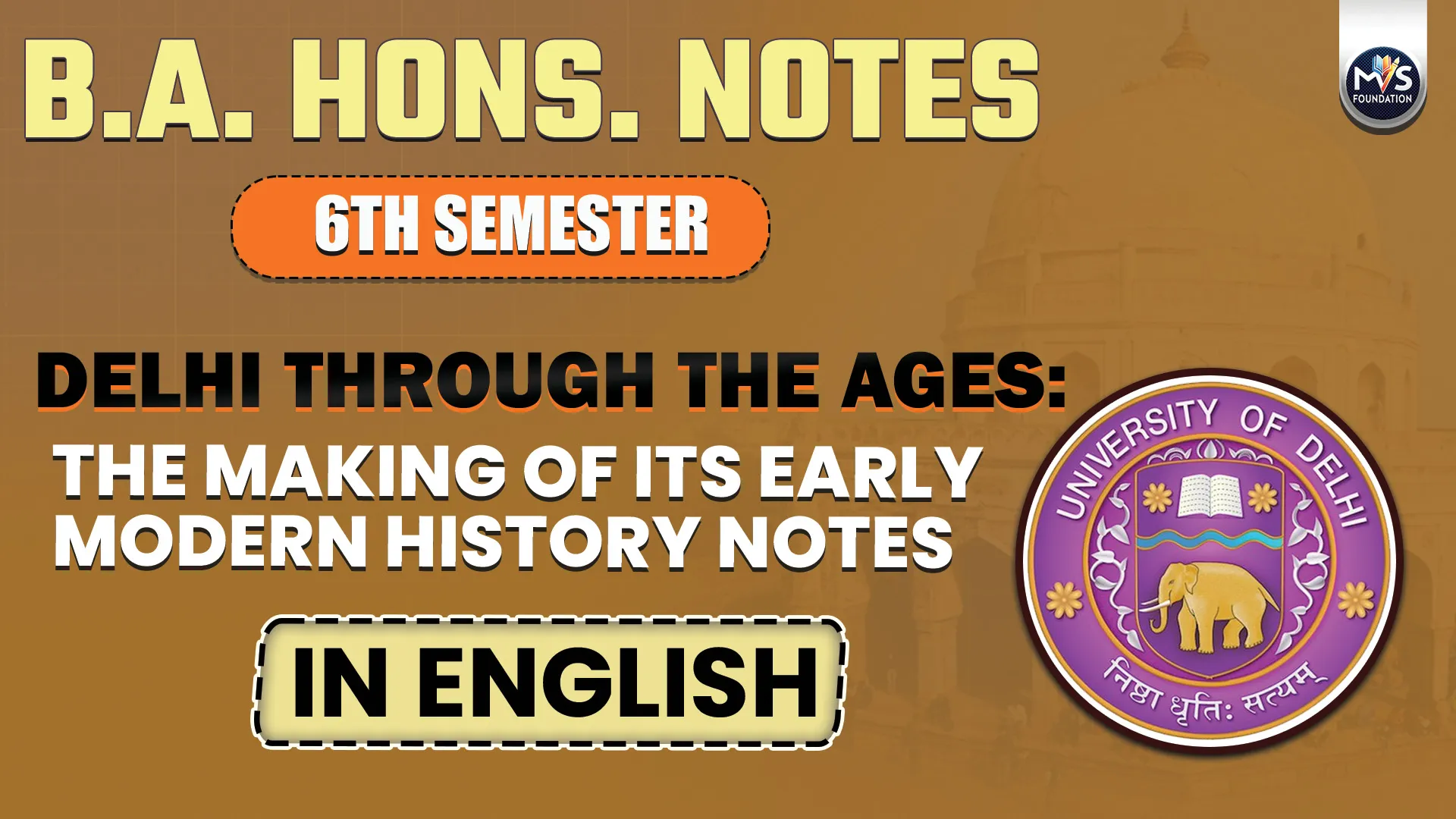
Get in Touch
We will get back to you within 24 hours.
Welcome to MVS Blog

Question 1. Critically evaluate the literary and archaeological evidence for Indraprastha.
Or
What are the various sources for writing the early history of Delhi?
Answer-
Introduction
The old name of Delhi is Indraprastha, a mythological city which finds mention in ancient Indian texts, especially the Indian epic Mahabharata. The city is said to have been built by the Pandavas, the heroes of the Mahabharata, and is often associated with the Ancient City of Delhi. Indraprastha is also an interesting and important topic in terms of literature and archaeological studies. In evaluating which, we must pay attention to the literary and archaeological evidence that supports or challenges the existence of this city.
Literary Evidence
1. Mahabharat
The primary literary source of Indraprastha is the Mahabharata, an ancient Indian epic composed over a period of several centuries. The epic describes in detail the construction of Indraprastha by the Pandavas with the help of architect Maya However, literary evidence presents challenges because the Mahabharata is an epic that is a mixture of history, mythology, and moral teachings.
2. Mention of Indraprastha in Buddhist texts
Indraprastha is mentioned as "Indapatta" or "Indapattana" in Pali language Buddhist texts, where it is described as the capital of the Kuru kingdom.
3. Ain-i-Akbari
There are many literary references to the existence of this mythical city. The famous Ain-i-Akbari by Abul Fazl indicates that Delhi was originally known as "Indrapat". He also suggested that Humayun rebuilt the Indrapat citadel and renamed it "Din Panah". Shams Siraj Afif in Tarikh-i-Firoz-Shahi" suggests that Indraprastha was the main control centre of a pargana (a tract of land with many villages).
4. Other ancient texts
Indraprastha is also mentioned in other ancient texts and Puranas, which provides additional literary evidence. However, these texts are often taken from the Mahabharata, reinforcing the challenge of relying solely on mythological information.
Archaeological Evidence
1. Excavation at Purana Qila
The Purana Qila in Delhi has been suggested by some as a possible site of ancient Indraprastha. Archaeological excavations at Purana Qila have revealed evidence of continuous human habitation dating back to the 3rd century BC However, the identification of Purana Qila with Indraprastha is not universally accepted among scholars.
2. Excavation at Lalkot
The fort of Lalkot was the original fort of Delhi, which was established 600 years before the present Red Fort by King Anangpal of the Tomar dynasty, whose archaeological source was excavated from 1957-1961 and from 1991-1995, which mainly related to the fort walls. Its other remains, including some ruins and mounds, are located in the present Sanjay Van Mehrauli, most of whose walls are completely broken.
3. Qila Rai Pithora
According to Upinder Singh, the Raipithora fort was later than Lalkot and its walls were 5 to 6 meters thick and 18 meters high in some places and there were doors in places on them, which are now few left. Excavations carried out in 1956-58 revealed their original structure, in which furnaces and floors of houses were also found.
Criticism and Challenges:
Mythology vs. History
The Mahabharata contains various mythological stories which can create problems to give real and authentic information of Indraprastha. The involvement of historical events with mythological elements in these sources promotes imaginary thinking and can create problems in its study.
Lack of direct confirmation
Archaeological evidence, especially the Purana Qila, does not explain the information related to Indraprastha given in the Mahabharata and the lack of inscriptions or other evidence linking the site to the mythological city raises questions about its identity.
Changing scenarios
Over time, due to natural phenomena, urbanization and human intervention, the quality of literary and archaeological sources giving information about Indraprastha has decreased, which can create confusion in explaining its ancient form.
Conclusion
Evaluation of the literary and archaeological evidence of Indraprastha is fraught with challenges. While the Mahabharata gives detailed information about the construction and existence of this city, the lack of direct archaeological veracity makes it challenging to firmly establish the historical reality of Indraprastha.
0 Response